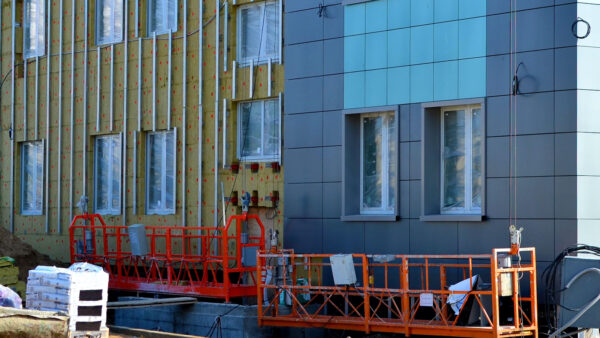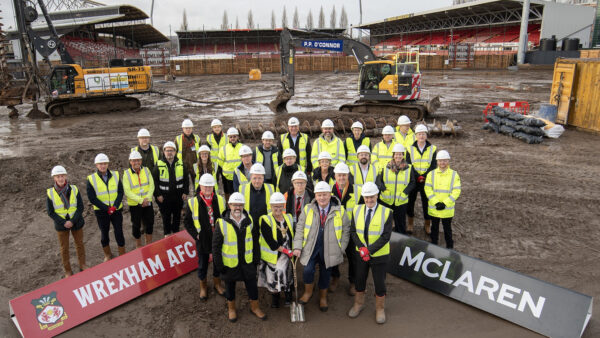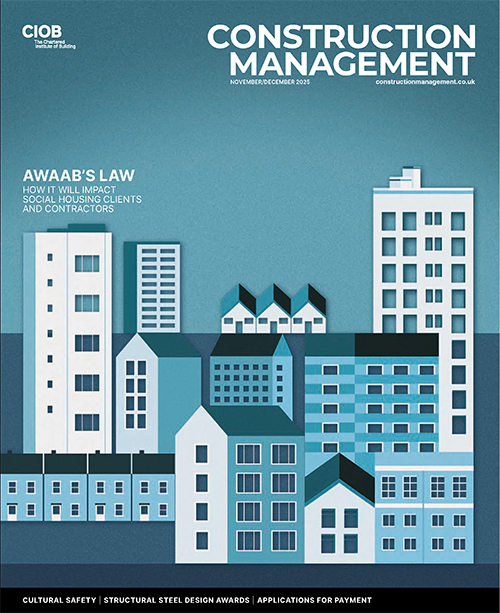
It’s time for organisations to consider what they need when implementing AI to support delivery of the golden thread, according to Murillo Piazzi and Dakshina Liyanapathirana from u003ca href=u0022https://www.okana.global/u0022 target=u0022_blanku0022 rel=u0022noopeneru0022u003eOkanau003c/au003e.
The requirement for a golden thread establishes the digital traceability of information throughout a building’s entire lifecycle. It guarantees that all essential data related to a building or asset is accurately recorded and readily accessible to relevant stakeholders. Ultimately, this transparency is essential to proving that buildings are safe and structurally sound.
Meeting compliance obligations under Parts 3 and 4 of the Building Safety Act (BSA) 2022 has pushed the construction industry toward improved information management practices. Information managers have been working to structure the necessary compliance evidence. The golden thread requirement established for higher-risk buildings has shown that a focus on real-time updates on the status of information is critical in getting information organised for approval. This, however, has proven to be a Herculean task.
Traditional paper-based documentation methods are unlikely to meet BSA requirements, whereas digital solutions that enhance information management could put organisations in the compliance path and reduce project risks. However, many digital processes still depend on human intervention, requiring yet another layer of expertise within an already complex and fragmented project environment. This is where AI can add substantial value.
u0022AI has the potential to simplify information management tasks essential for establishing the golden thread, enhancing efficiency and providing an additional layer of assurance for projects.u0022
AI has the potential to simplify information management tasks essential for establishing the golden thread, enhancing efficiency and providing an additional layer of assurance for projects. Client organisations – including local authorities, housing associations and private developers –and contracting organisations could start engaging their supply chains to explore AI-driven solutions that mitigate project risks. Here are some of the aspects organisations could consider.
Facilitating the use of CDEs
The advantages of ensuring information uniqueness and centralised accessibility are well understood. However, for many, sharing data via common data environments (CDEs) remains more complex than the traditional “attach and send” email workflow. One major challenge is the largely manual process required to capture critical metadata, often involving lengthy forms that must be completed each time a new file is shared.
AI can streamline this process by automating the tagging and categorisation of shared files, ensuring they remain unique and easily traceable. For example, AI can analyse file content, extract key details and automatically populate a drawing register, which is then integrated into the CDE. This reduces manual input, minimises errors and improves overall efficiency in information management.
Systems integration
Project teams rely on various specialised systems to produce and share information, often generating outputs in multiple formats. For companies aiming to establish the golden thread of information, the integration of these systems is crucial and should ensure that data remains connected and flows effortlessly across platforms.
AI can play a key role in simplifying this process by facilitating format conversion and enabling better system interoperability. A well-trained AI model, for example, can intelligently identify where specific information is located (eg a table in a drawing) and determine where it should be placed when reformatting is required (eg an asset register).
Real-time updates and QA/QC assessments
QA/QC assessments on the information produced throughout a building lifecycle are still consuming a lot of time. Assessments are still largely done by copying and pasting data from one document to another, reformatting data entries so that they can be checked, and other menial tasks. This means that feedback loops are slow and issues have been already addressed by the time they are communicated to the relevant parties.
When working on clearly defined QA/QC assessment rules and open data schemas like IFC, AI can drastically accelerate this feedback. For instance, AI can monitor design changes and identify conflicts. A change in the placement of mechanical systems might impact accessibility for future maintenance, or interfere with safety requirements, but AI can automatically flag these potential issues in real-time, informing the project team on how information is progressing.
Data retrieval and analysis
u0022When working on clearly defined QA/QC assessment rules and open data schemas like IFC, AI can drastically accelerate this feedback.u0022
The manual retrieval of data from multiple sources, such as design models, drawings, surveys and safety reports, is often time-consuming and prone to human error. While current digital systems enable searches by document ID and, in some cases, keyword searches within documents, AI takes this efficiency to the next level.
AI can streamline this process by implementing machine learning-based data-mining techniques. AI-powered systems can automatically extract and cross-reference data from various documents and formats, such as PDFs, drawings and spreadsheets, providing real-time insights. Natural language questions such as “please give me the location of all the fire-rated doors in this building” will result in an AI-powered system retrieving the information that was structured in the asset information model.
Keeping information up to date
Throughout a building’s lifecycle, changes are inevitable – rooms may be renumbered during design, alternative manufacturers may be required during construction, and equipment may be replaced during operation. Keeping track of these updates is a complex and ongoing challenge.
With high-quality data, AI can assist teams in maintaining accurate information, reducing rework and minimising errors. For instance, AI can help facility management teams update their CAFM systems whenever equipment is replaced. By extracting relevant details from operations manuals or forms, AI can automatically update the necessary fields in an asset register, which can then be seamlessly imported into the organisation’s CAFM system. This automation ensures that records remain current, improving efficiency and decision-making.
By embracing AI-driven solutions, the construction industry can take a significant step toward establishing a truly robust golden thread, ensuring that critical building information remains accurate, accessible and up to date. While challenges remain, the integration of AI into information management processes presents an opportunity to enhance compliance, reduce risks and improve overall project efficiency.
As the industry continues to evolve, those who strategically adopt AI will be better positioned to meet regulatory demands and build safer, more resilient structures for the future.
Don’t miss out on BIM, information management and digital construction news: sign up to receive the BIMplus newsletter.










